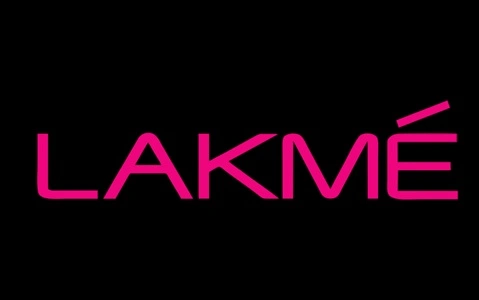Lakmé, founded in 1952 and now owned by Hindustan Unilever Limited (HUL), remains India’s most widely used beauty brand—with around 29% usage share according to a September 2024 Statista survey, ahead of competitors like Maybelline and L’Oréal. As of 2023, Lakmé generated approximately ₹1,200 crore in revenue, firmly holding ~15–25% share across core cosmetics segments in India. Despite this strength, HUL’s beauty division in India has struggled: over the past two years, sales growth has reached only ~2%, trailing rivals such as Nykaa (9%) and domestic disruptors like Mamaearth. Against this backdrop—marked by strong legacy brand equity but slowed growth and intensifying competition—this SWOT analysis provides clarity on Lakmé’s strategic position in 2025.

Strengths
- Heritage and brand trust: As India’s first major indigenous beauty brand, Lakmé enjoys national recognition and consumer trust built over 70+ years. It leads with strong brand salience across demographics.
- Extensive distribution and salon network: Leveraging HUL’s robust supply chains, Lakmé reaches over 1,200 beauty‑assisted retail outlets and operates around 485 Lakmé Beauty Salons across India—creating strong omnichannel penetration.
- Wide product portfolio with innovations: Lakmé offers over 300 SKUs across cosmetics, skincare, haircare, and salon services—including sub‑brands like Absolute and 9‑to‑5—which help to cater to diverse customer preferences.
- Celebrity endorsements and fashion engagement: High‑profile ambassadors (Kareena Kapoor, Kajol, Ananya Pandey) and sponsorship of Lakmé Fashion Week reinforce brand visibility and aspirational positioning.
- Backing of HUL’s financial strength: As part of HUL, Lakmé benefits from stable capital, supply efficiencies, and proven FMCG expertise—buffering against volatility in beauty business cycles.
Weaknesses
- Limited premium positioning: While Lakmé is dominant in the value-for-money segment, it lags behind premium entrants like Revlon and L’Oréal in high-growth upscale categories—a limitation amid increasing premium segment demand (~30% annual growth).
- Product differentiation and brand clutter: With a broad portfolio, certain lines fail to stand out—leading to overlap and consumer confusion rather than clear brand stretch or segmentation impact.
- Quality inconsistency in salon services: Complaints about service quality at Lakmé Beauty Salons in some regions risk negative word-of-mouth, which could undermine the experiential value component of the brand.
- Perception issues with pricing at higher SKUs: Consumer feedback indicates that newer premium Lakmé ranges are often viewed as overpriced for their quality—diluting perceived value compared to international peers .
Opportunities
- Premium and natural/organic expansion: Rising consumer preference for premium, cruelty‑free, and natural products creates an opening for Lakmé to launch premium lines or expand its wellness‑aligned offerings.
- Digital transformation & personalization: Enhanced investments in AR virtual try‑on, AI‑led recommendations, and D2C experiences could deepen engagement and improve conversion—especially among Gen‑Z consumers.
- International expansion: With limited presence outside India, Lakmé can leverage the Indian diaspora and growing Asian markets to gain global share, matching trends among premium Indian beauty exports.
- Community engagement and influencer-led marketing: Co‑creating brand strategies with consumers and influencers—particularly micro‑influencers and UGC content—can drive authenticity and reach new segments .
Threats
- Aggressive competition: Global brands like Revlon, Maybelline, L’Oréal, and fast-growing homegrown players like Nykaa and Mamaearth are capturing premium consumers with modern formulations and branding.
- Counterfeit products and erosion of rural brand equity: Fake Lakmé-branded items, especially in smaller towns, risk tarnishing consumer trust and diluting brand perception in core markets .
- Rising allergy sensitivity and regulatory scrutiny: Skin sensitivity incidents or regulatory action due to allergenic formulations could dent product credibility and result in backlash .
- Underperforming salon and service ecosystem: If store and salon quality remain inconsistent, the experiential arm of the brand may suffer, undermining claims of holistic beauty services.
Future Outlook
Looking ahead into late 2025 and FY26, Lakmé faces both challenges and opportunities. HUL has appointed Priya Nair—a seasoned beauty-division executive—as CEO of Hindustan Unilever India to revitalize growth, particularly in the face of lagging beauty sales (only ~2% growth over two years) and aggressive competition from brands like Nykaa and Mamaearth.
Strategic priorities include:
- Premiumisation push: Launching premium and wellness-focused ranges to regain premium market share and compete head-on with international brands.
- Digital acceleration: Investing in AR, AI-driven personalization, and strong D2C platforms to appeal to youth consumers and increase online penetration.
- Salon quality overhaul: Standardize and upscale quality across Lakmé Beauty Salons to strengthen service-led brand appeal.
- Counterfeit deterrence and rural education: Strengthen supply chain traceability, enforce brand protection, and educate consumers to reduce impact of fake products.
- Global footprint exploration: Pilot Lakmé offerings in select global markets, starting with Indian diaspora strongholds, to diversify revenue beyond India.
If Lakmé can modernize its brand strategy, align pricing with value perception, reinvent salon experiences, and lead in digital engagement—all backed by HUL’s execution capabilities—it can regain momentum. Sustaining leadership in India’s beauty and cosmetics market—while expanding into premium segments and international arenas—will determine its trajectory in an increasingly competitive landscape.